Electrical diagrams. Types of schemes

Hi Habr!
More often in articles, instead of electric circuits, colorful pictures are given, and disputes arise in the comments.
In this regard, I decided to write a small article-educational program on the types of electrical circuits, classified in the Unified system for design documentation (ESKD) .
Throughout the article I will rely on ESKD.
Consider GOST 2.701-2008 Unified System for Design Documentation (ESKD). Scheme. Types and types. General requirements for implementation .
This GOST introduces the concepts:
- type of scheme - a classification grouping of schemes, distinguished by the signs of the principle of operation, the composition of the product and the connections between its constituent parts
- type of scheme - classification group, allocated on the basis of their main purpose.
We will immediately agree that the type of circuits we will have is the only one - an electrical circuit (E) .
We will understand what types of schemes are described in this GOST.
| Type of circuit | Definition | Scheme type code |
|---|---|---|
| Structural diagram | Document defining the main functional parts of the product, their purpose and interrelations | one |
| Functional diagram | A document explaining the processes occurring in individual functional circuits of the product (installation) or product (installation) in general | 2 |
| Schematic diagram (complete) | A document that defines the full composition of the elements and the relationship between them and, as a rule, gives a complete (detailed) understanding of the principles of operation of the product (installation) | 3 |
| Connection diagram (assembly) | A document showing the connections of the component parts of the product (installation) and identifying the wires, harnesses, cables or pipelines with which these connections are made, as well as the places of their connections and inputs (connectors, boards, clips, etc.) | four |
| Wiring diagram | Document showing external product connections | five |
| General scheme | A document defining the components of the complex and connecting them together at the place of operation | 6 |
| Location map | A document defining the relative location of the component parts of the product (installation), and, if necessary, also of harnesses (wires, cables), pipelines, light guides, etc. | 7 |
| Combined scheme | Document containing elements of different types of circuits of the same type | 0 |
| Note - The names of types of circuits indicated in brackets are established for electrical circuits of power facilities. | ||
Next, we consider each type of circuits in more detail as applied to electrical circuits.
Main document: GOST 2.702-2011 Unified system for design documentation (ESKD). Rules for the implementation of electrical circuits .
So, what is this and what do these electrical circuits “eat”?
We will be answered by GOST 2.702-2011: Electric scheme - a document containing, in the form of conventional images or designations, the components of a product operating with electric energy and their interconnection .
Electrical diagrams depending on the main purpose are divided into the following types:
Electrical structural diagram (E1)
The structural diagram depicts all the main functional parts of the product (elements, devices and functional groups) and the main relationships between them. Graphical design of the scheme should provide the best idea of the sequence of interaction of functional parts in the product. On the lines of interrelations it is recommended to use arrows to indicate the direction of the processes occurring in the product.
An example of an electrical structural diagram:

Functional electrical circuit (E2)
The functional diagram depicts the functional parts of the product (elements, devices and functional groups) involved in the process illustrated by the diagram, and the connections between these parts. Graphical construction of the scheme should give the most visual representation of the sequence of processes illustrated by the scheme.
An example of a functional electrical circuit:

Electrical schematic diagram (complete) (E3)
The circuit diagram depicts all electrical elements or devices necessary for the implementation and control of installed electrical processes in the product, all electrical interconnections between them, as well as electrical elements (connectors, clips, etc.) that end input and output circuits. The scheme is allowed to depict the connecting and mounting elements that are installed in the product for constructive reasons. Schemes performed for products that are in the off position.
An example of an electrical principle circuit:
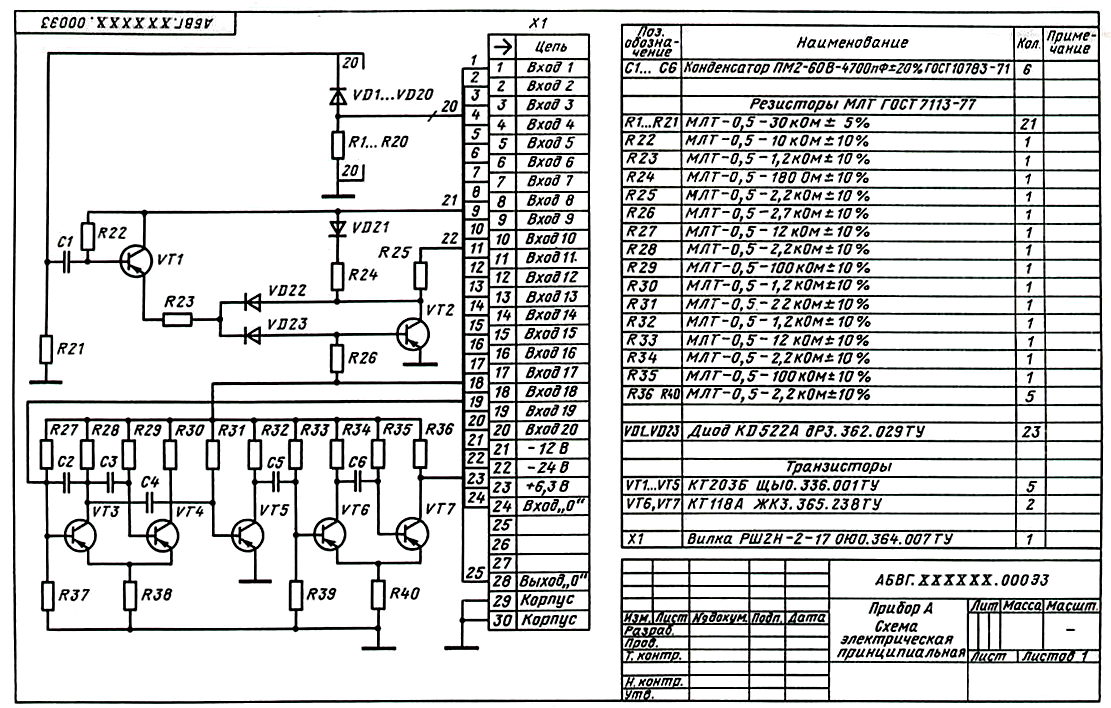
Electrical connections (assembly) (E4)
The connection diagram should depict all devices and elements included in the product, their input and output elements (connectors, boards, clamps, etc.), as well as connections between these devices and elements. The arrangement of graphic symbols of devices and elements in the diagram should roughly correspond to the actual placement of elements and devices in the product. The arrangement of the images of the input and output elements or outputs within the graphic symbols and devices or elements should correspond approximately to their actual placement in the device or element.
Example of electrical connections:
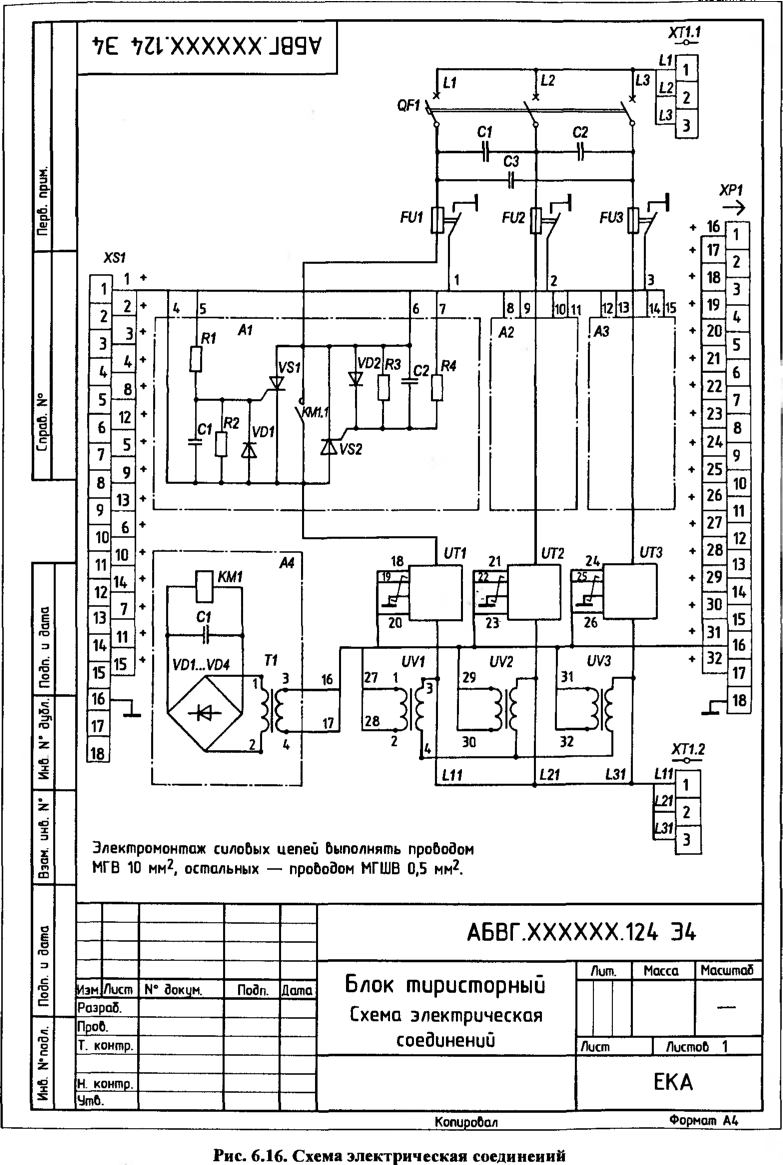
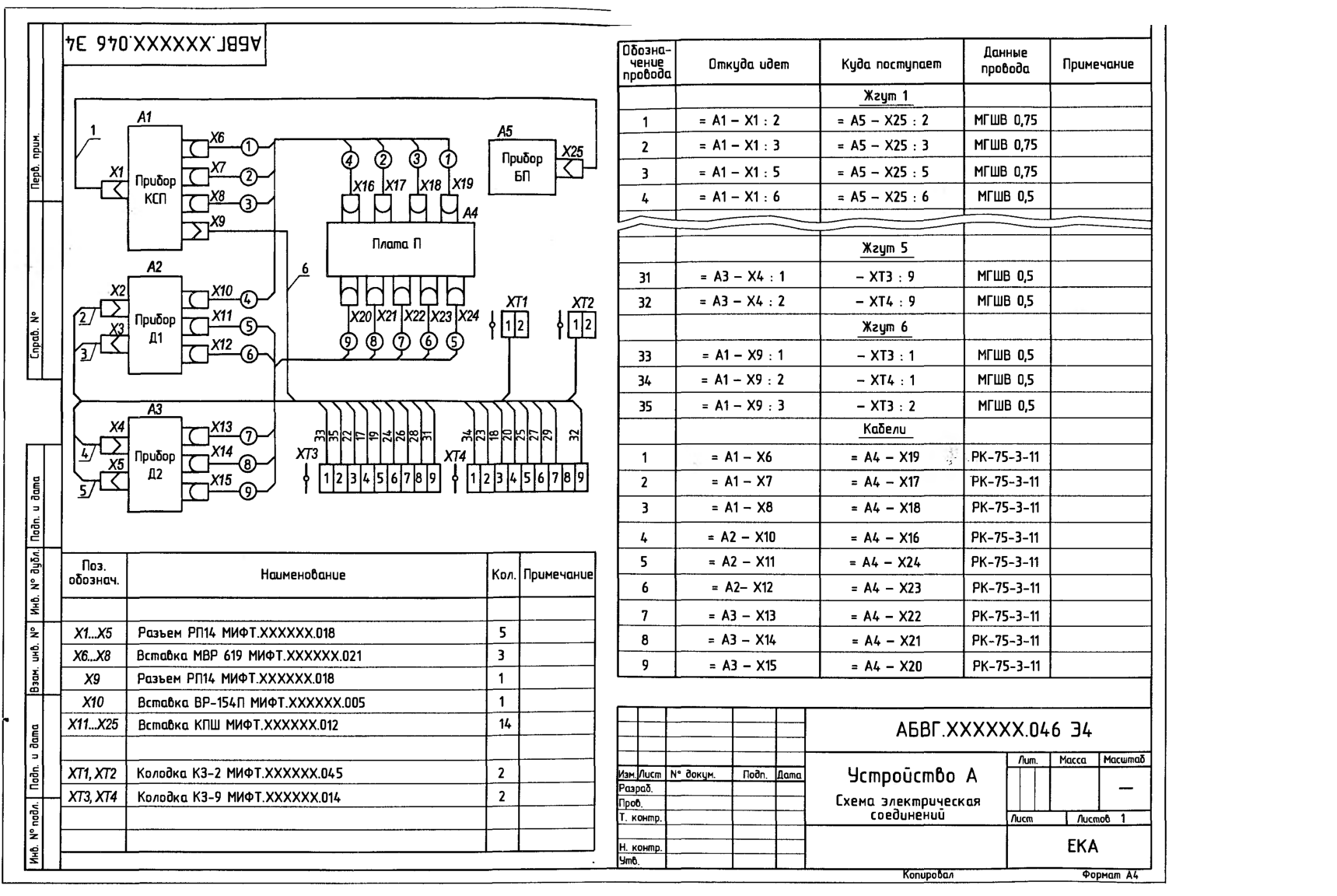
Electrical connection diagram (E5)
The wiring diagram should depict the product, its input and output elements (connectors, clips, etc.) and the ends of wires and cables (multi-core wires, electrical cords) of external mounting, to which the connection data of the product are placed (characteristics external circuits and (or) addresses). The placement of images of input and output elements inside the graphic designation of the product should roughly correspond to their actual placement in the product. The diagram should indicate the reference designations of the input and output elements assigned to them in the circuit diagram of the product.
Example of electrical connections:

General electrical circuit (E6)
The general scheme depicts devices and elements included in the complex, as well as wires, harnesses and cables (multicore wires, electrical cords) connecting these devices and elements. The arrangement of graphic symbols of devices and elements in the diagram should roughly correspond to the actual placement of elements and devices in the product.
An example of a common electrical circuit:
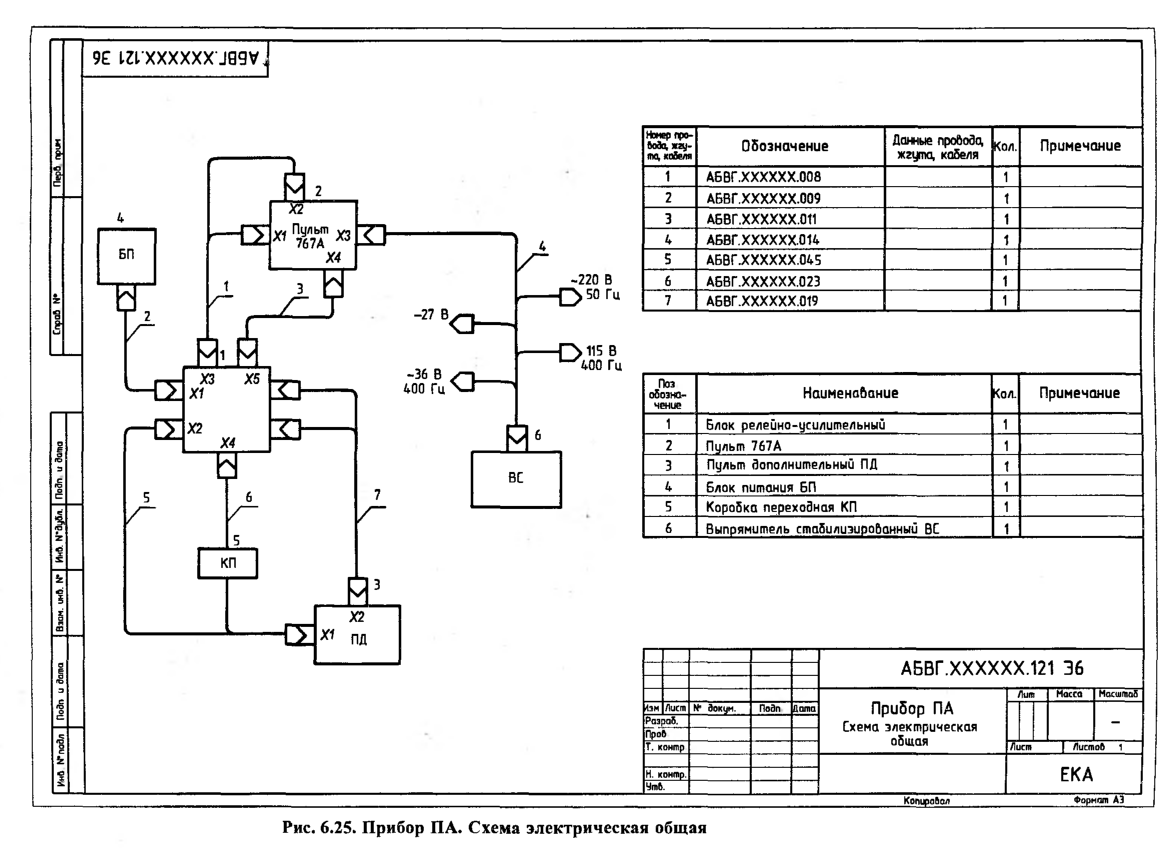
Electrical layout (E7)
The layout shows the components of the product, and if necessary, the connections between them - the structure, room or area on which these components will be located.
Example of electrical layout:

Integrated electrical circuit (E0)
In this type of diagrams, various types are depicted, which are combined in a single drawing.
An example of an electrical circuit:
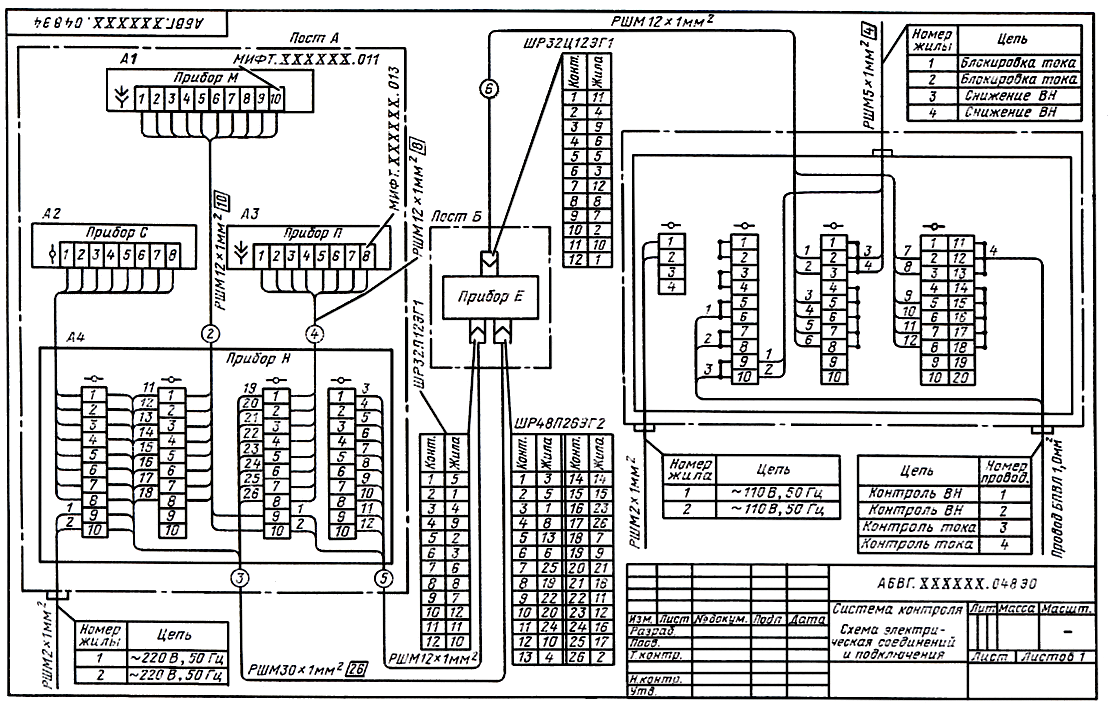
')
PS
This is my first article on Habré do not judge strictly.
Source: https://habr.com/ru/post/451158/
All Articles